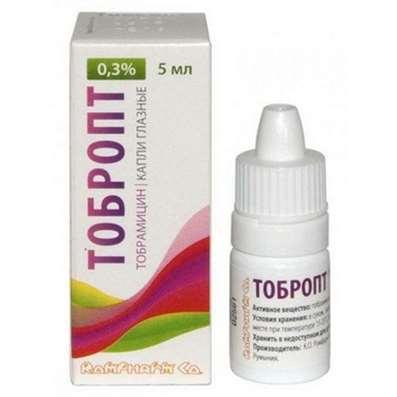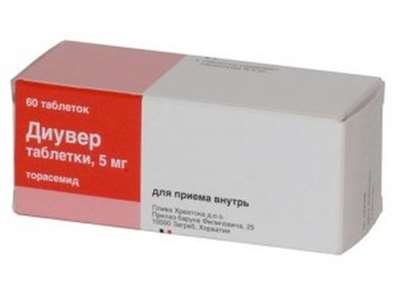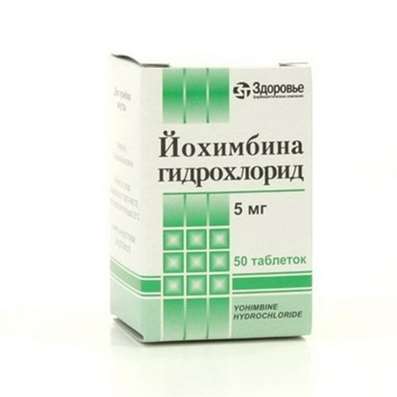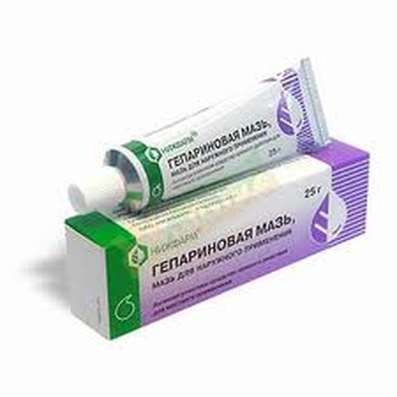Instruction for use: Nasonex
I want this, give me price
Active substance Mometasone
ATX Code R01AD Mometasone
Pharmacological group
Glucocorticosteroid for topical use [Glucocorticosteroids]
Nosological classification (ICD-10)
J30 Vasomotor and allergic rhinitis
Allergic rinopatiya, Allergic rhinosinusopathy, Allergic respiratory diseases, Allergic rhinitis, nasal allergy, Seasonal Allergic Rhinitis, Vasomotor rhinitis, Long-allergic rhinitis, Perennial allergic rhinitis, Perennial allergic rhinitis, Year-round or seasonal allergic rhinitis, Year-round allergic rhinitis nature, Rhinitis allergic vasomotor, Exacerbation of pollen allergy in the form of Syndrome rinokonyunktivalnogo, Acute allergic rhinitis, Edema of the nasal mucosa, Edema of the nasal mucosa, Swelling of the mucosa of the nasal cavity, Swelling of the nasal mucosa, Swelling of the nasal mucosa, pollen disease, Permanent allergic rhinitis, rhinoconjunctivitis, rhinosinusitis,rhinosinusopathy, Seasonal allergic rhinitis, Seasonal Allergic Rhinitis, Haymarket rhinitis, Chronic allergic rhinitis, Allergic respiratory diseases
J31 Chronic rhinitis, nasopharyngitis and pharyngitis
Allergic rhinosinusopathy, Inflammation of the nasal mucosa, Infectious-inflammatory diseases of upper respiratory tract, Catarrh nasopharyngeal area, Year-round rhinitis, Özen, Sore throat or nose hyperplastic, Rhinitis, Faringoezofagit, Chronic bacterial rhinitis
J32 Chronic sinusitis
Allergic rhinosinusopathy, purulent sinusitis, Catarrh nasopharyngeal area, Catarrh of the sinuses, Exacerbation of sinusitis, chronic Sinusitis
Composition and form of release
Nose spray dosage 1 dose
Mometasone furoate (as monohydrate) 50 μg
Excipients: dispersed cellulose BP (British Pharmacopeia) 65 cps; Glycerol; Sodium citrate dihydrate; Citric acid monohydrate; Polysorbate 80; Benzalkonium chloride; Phenylethyl alcohol; purified water
In a plastic vial with a dosing valve of 120 doses; In a cardboard box 1 bottle.
Description of dosage form
A white or almost white suspension in a spray bottle.
pharmachologic effect
Pharmacological action - anti-inflammatory, anti-allergic.
Pharmacodynamics
Mometasone furoate is a synthetic glucocorticosteroid for topical application. Has anti-inflammatory and antiallergic effect when used in doses, in which no systemic effects occur. It inhibits the release of mediators of inflammation, increases the production of lipomodulin, which is an inhibitor of phospholipase A, which causes a decrease in the release of arachidonic acid and, accordingly, inhibition of the synthesis of metabolic products of arachidonic acid-cyclic endoperoxides, PG. It prevents the accumulation of neutrophils, reduces inflammatory exudate and production of lymphokines, inhibits the migration of macrophages, leads to a decrease in the processes of infiltration and granulation. Reduces inflammation due to a decrease in the formation of the chemotaxis substance (influence on the "late" allergy reaction), inhibits the development of an "immediate" allergic reaction (due to inhibition of the production of metabolites of arachidonic acid and a decrease in the release of inflammatory mediators from mast cells).
In studies with provocative tests, when applying antigens to the mucous membrane of the nasal cavity, high anti-inflammatory activity of Nazonex was demonstrated both in the early and late stages of the allergic reaction, which was confirmed by a decrease (compared with placebo) of histamine and eosinophil activity, and a decrease ( Compared with the baseline) of the number of eosinophils, neutrophils, and adhesion proteins of epithelial cells.
Pharmacokinetics
Mometasone furoate is characterized by a negligible bioavailability (≤0.1%) and when administered as intranasal inhalation it is practically not detected in blood plasma (even when using a sensitive detection method with a sensitivity threshold of 50 pg / ml). In this regard, there is no corresponding pharmacokinetic data for this dosage form. Suspension is very poorly absorbed from the digestive tract, so a small amount that can enter the gastrointestinal tract after inhalation into the nasal cavity is subjected to active primary metabolism before excretion with urine or bile.
Indications
Treatment of allergic rhinitis (seasonal and year-round) in adults, adolescents and children from 2 years;
Exacerbation of sinusitis (complex therapy with antibiotics) in adults (including senile age) and children from 12 years;
Prevention of seasonal allergic rhinitis of moderate and severe course (recommended 2-4 weeks before the expected start of the dusting season).
Contraindications
Hypersensitivity to any component of the drug;
Presence of an untreated local infection involving the mucous membrane of the nasal cavity;
Recent surgical intervention or trauma to the nose (before wound healing);
Tuberculosis infection (active or latent) of the respiratory tract, untreated fungal, bacterial, viral systemic infection or infection caused by Herpes simplex with eye damage (as an exception, the prescription of the drug in these cases is possible by order of the doctor with great care);
Children under 2 years of age (no safety data are available).
pregnancy and lactation
After intranasal use of the drug at the maximum therapeutic dose, mometasone is not detected in the blood plasma even at the minimum concentration; Therefore, it can be expected that its effect on the fetus will be negligible, and the potential toxicity with respect to reproductive function is very low.
However, due to the fact that special, well-controlled studies of the drug in pregnant women have not been performed, Nazonex should be given to pregnant women, mothers, nursing mothers or women of childbearing age only if the expected benefit from his appointment justifies the potential risk to the fetus and newborn.
Newborns whose mothers used SCS (glucocorticosteroids) during pregnancy should be carefully examined to identify possible hypofunction of the adrenal glands.
Side effects
When treating seasonal or all-year-round allergic rhinitis.
adults:
- nasal bleeding (obvious or secretion of blood-colored mucus or blood clots)
- pharyngitis,
- burning sensation in the nose,
Irritation of the nasal mucosa.
Nasal bleeding, as a rule, stopped on their own, were not severe; They occurred at a frequency slightly higher than when using placebo (5%), but equal to or less than using other GCS for intranasal use, which were used as active controls (in some of them the incidence of nasal bleeding was up to 15% ). The incidence of all other adverse events was comparable to the incidence of their occurrence with a placebo.
Children:
- nosebleeds,
- headache,
- a sensation of irritation in the nose,
- sneezing.
The incidence of these adverse events in children was comparable to the incidence of their occurrence with placebo.
In the treatment of exacerbations of sinusitis (when using the spray Nazoneks as an auxiliary).
In adults and adolescents:
- headache,
- pharyngitis,
- burning sensation in the nose,
Irritation of the nasal mucosa.
Nasal bleeding was moderately expressed, the incidence of their occurrence with Nazonex was also comparable to the incidence of nasal bleeding with placebo (5% compared to 4%, respectively).
Very rarely, intranasal application of GCS, there have been cases of perforation of the nasal septum or increased intraocular pressure.
Interaction
Combined therapy with loratadine was well tolerated by patients. Studies of interaction with other drugs have not been conducted.
Dosing and Administration
Intranasally. Nasonex® is used as an intranasal inhalation of a suspension contained in a spray bottle. Inhalations are carried out with a special dispensing nozzle on the vial.
Before the first application of Nazonex® nasal spray, it is necessary to calibrate it by pressing the dosing device 6-7 times. After the "calibration", a stereotyped drug supply is set up, at which approximately 100 mg of a suspension of mometasone furoate containing mometasone furoate monohydrate in an amount equivalent to 50 μg of chemically pure mometasone furoate is released with each press of the button. If the nasal spray is not used for 14 days or longer, a new "calibration" is required before a new application.
Before each use, it is necessary to vigorously shake the spray bottle.
Treatment of seasonal or all-year-round allergic rhinitis
Adults (including senile age) and adolescents with 12 years of age, the usually recommended preventive and therapeutic dose of the drug is 2 inhalations (50 μg each) in each nostril, once (total daily dose of 200 μg). After achieving the desired therapeutic effect for maintenance therapy, it is advisable to reduce the dose to 1 inhalation in each nostril 1 time per day (total daily dose of 100 μg).
If the symptoms of the disease can not be reduced by applying the drug at the recommended therapeutic dose, the daily dose may be increased to 4 inhalations in each nostril once a day (total daily dose of 400 μg). After reducing the symptoms of the disease, a dose reduction is recommended.
The onset of the drug is usually noted clinically within the first 12 hours after the first use of the drug.
Children 2-11 years of age: the recommended therapeutic dose is 1 inhalation (50 μg) in each nostril once a day (total daily dose is 100 μg).
Auxiliary treatment of exacerbations of sinusitis
Adults (including senile age) and adolescents from age 12: the recommended therapeutic dose is 2 inhalations (50 μg each) to each nostril 2 times a day (total daily dose of 400 μg).
If the symptoms of the disease can not be reduced by applying the drug at the recommended therapeutic dose, the daily dose may be increased to 4 inhalations in each nostril 2 times a day (total daily dose of 800 μg). After reducing the symptoms of the disease, a dose reduction is recommended.
After a 12-month treatment with Nazonex® nasal spray, there was no evidence of atrophy of the nasal mucosa; In addition, mometasone furoate showed a tendency to promote the normalization of the histological pattern in the study of biopsies of the nasal mucosa.
Overdose
Symptoms: with prolonged use of GCS in high doses, as well as with the simultaneous use of several GCS, oppression of the function of the hypothalamic-pituitary-adrenal system is possible.
Treatment: Due to low (less than 0.1%) systemic bioavailability, it is unlikely that an accidental or intentional overdose will require the taking of any measures other than monitoring the patient and then continuing treatment at the recommended dose.
Precautionary measures
As with any long-term treatment, patients who use nasonex® nasal spray for several months and longer should periodically undergo examination for possible changes in the nasal mucosa. In case of development of a local fungal infection of the nose or pharynx, it is necessary either to cancel the drug, or to conduct a special treatment. The prolonged irritation of the mucous membrane of the nose or pharynx can also be an indication for the withdrawal of the drug.
In placebo-controlled clinical trials in children, when nasonex® nasal spray was used at a daily dose of 100 mcg during the year, there was no growth retardation in children. With prolonged treatment with Nasonex nasal spray, no signs of suppression of the function of the hypothalamic-pituitary-adrenal system were observed. Patients who switch to Nazonex nasal spray treatment after long-term therapy with SCS of systemic action require special attention.
The abolition of SCS systemic action in such patients can lead to adrenal insufficiency, which may require appropriate measures. During the transition from treatment of SCS systemic action to treatment with Nazonex® nasal spray, some patients may experience withdrawal symptoms of SCS, for example, joint and / or muscle pain, fatigue, depression; Despite a decrease in the severity of symptoms associated with damage to the nasal mucosa; Such patients need to specifically convince in the advisability of continuing treatment with Nazonex nasal spray. A change in therapy may also reveal previously developed allergic diseases, such as allergic conjunctivitis, eczema, which were previously masked by systemic SCS therapy.
Patients receiving treatment with SCS have potentially reduced immune reactivity, they must be warned about the increased risk of infection in case of contact with patients with infectious diseases (chickenpox, measles), and about the need for medical advice if such a contact occurs.
storage Conditions
At a temperature of 2-25 ° C. (Do not freeze)
Keep out of the reach of children.
Shelf life
3 years.
Do not use after the expiry date printed on the package.

 Cart
Cart





